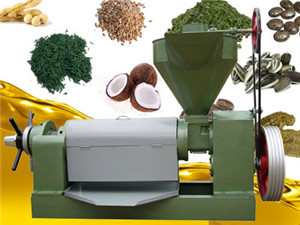
As an experienced player in the vegetable oil processing industry, I've witnessed firsthand how temperature control in medium-sized screw oil presses can make or break the quality of soybean oil and other vegetable oils. In this article, I'll delve deep into the physical and chemical mechanisms and practical applications of the temperature control system in these presses.
Temperature control during the pressing process of medium-sized screw oil presses has a direct impact on the flavor stability of bean oils and the denaturation of proteins. Let's start with the key aspects of temperature control theory, such as protein denaturation, oil oxidation, and flavor preservation.
Protein denaturation is a critical factor. When the temperature is too high, proteins in beans will denature rapidly, which may lead to a decrease in the quality of the remaining bean cake and also affect the flavor of the oil. According to industry research, if the temperature exceeds 120°C during the pressing process, the denaturation rate of proteins can increase by more than 30%, which is not conducive to the comprehensive utilization of raw materials. On the other hand, proper temperature control can effectively preserve flavor substances. For example, at a temperature of around 80 - 90°C, the loss of volatile flavor substances in soybean oil can be controlled within 10%, ensuring a more stable and rich flavor.

There are several common temperature control modes in medium-sized screw oil presses, such as constant temperature control and gradient temperature control. Constant temperature control maintains a stable temperature throughout the pressing process, which is suitable for raw materials with relatively stable moisture content. Gradient temperature control, on the other hand, adjusts the temperature according to different pressing stages, which can better meet the needs of different raw materials and improve the oil yield.
The layout of temperature sensors is also crucial. Usually, sensors are installed at the inlet, outlet, and key parts of the pressing chamber to accurately monitor the temperature changes. In addition, the moisture content of raw materials also needs to be considered. When the moisture content is high, the temperature can be appropriately increased to accelerate the evaporation of water, but it should not be too high to avoid excessive protein denaturation. For example, when the moisture content of soybeans is between 12% - 15%, the initial pressing temperature can be set at 90 - 100°C.
In actual production, there are always some typical problems. For example, when the temperature sensor fails, it may lead to inaccurate temperature control. Here is a table showing some common alarm codes and their solutions:
| Alarm Code | Possible Cause | Solution |
|---|---|---|
| E01 | Temperature sensor failure | Check the sensor connection and replace if necessary |
| E02 | Heating element malfunction | Inspect the heating element and repair or replace it |

By mastering the temperature control technology of medium-sized screw oil presses, we can effectively improve the quality of soybean oil and other vegetable oils. According to practical experience, after optimizing the temperature control, the oil yield can be increased by about 5% - 8%, and the flavor stability can be significantly improved. This not only helps us meet the market demand for high - quality vegetable oils but also enhances our market competitiveness.
.jpg)
If you want to get more authoritative temperature control technology guidance and solve common temperature control problems in the pressing process, click here to get the PDF of 《Temperature Control Settings Self - Check List》.

